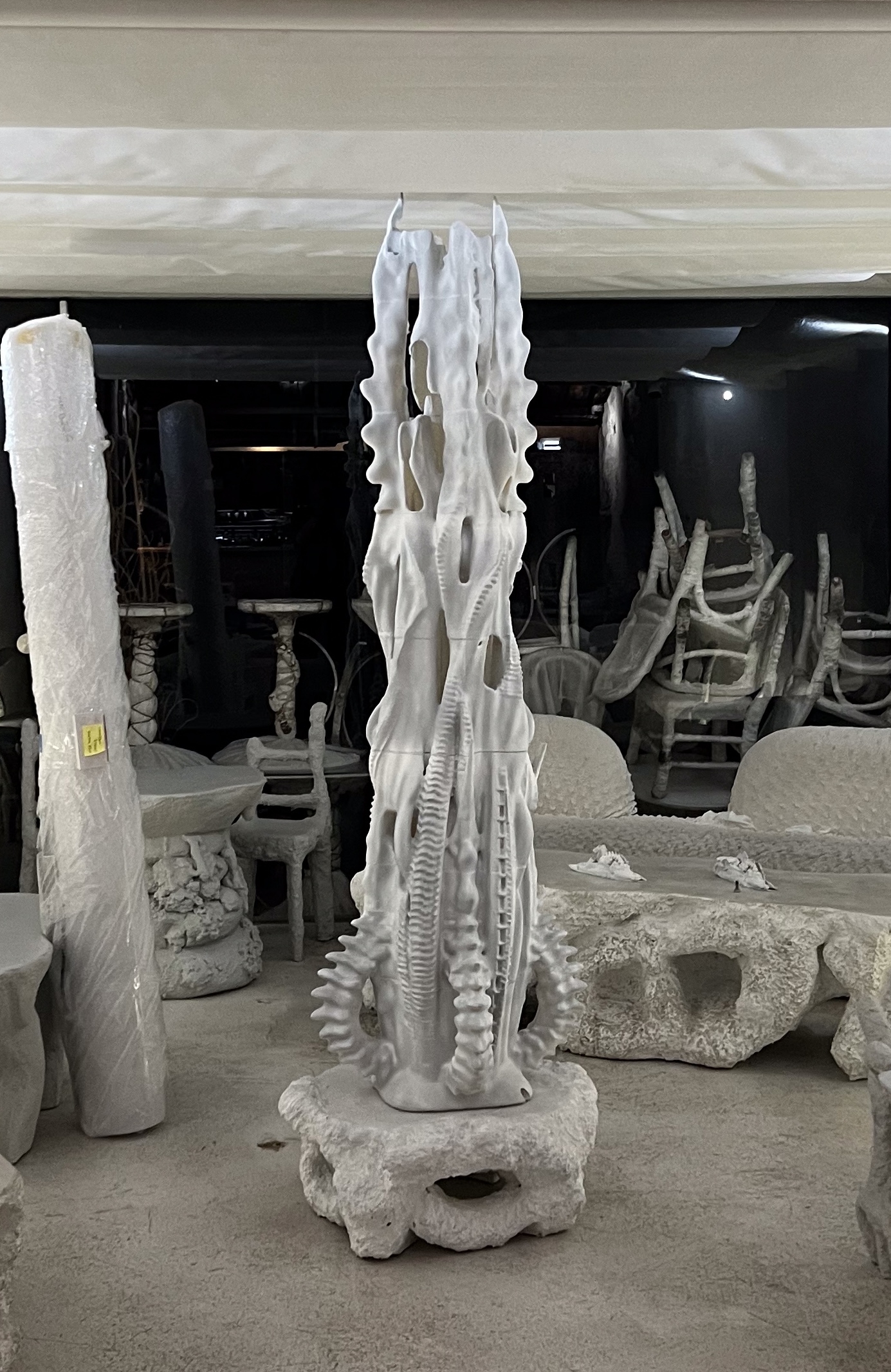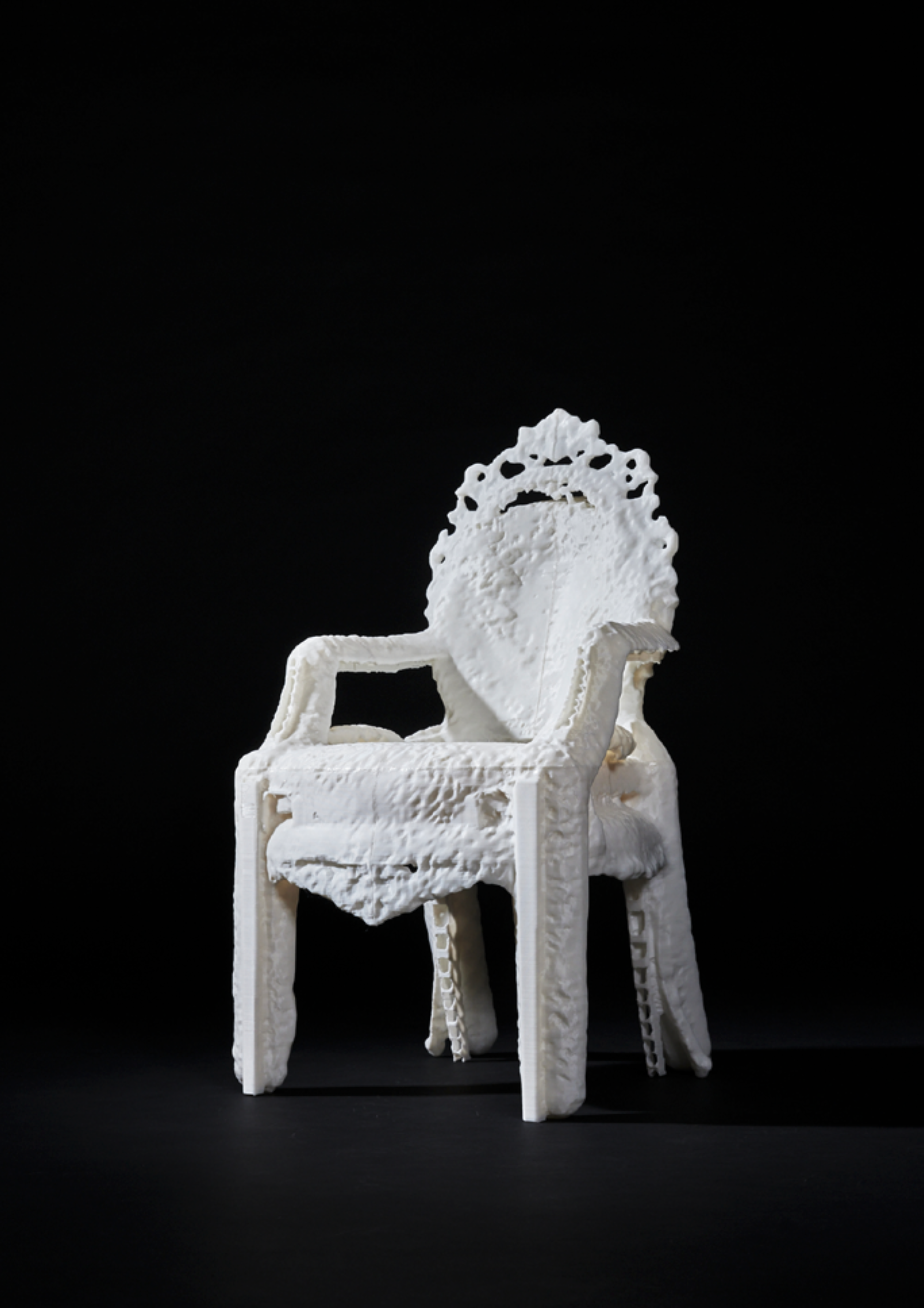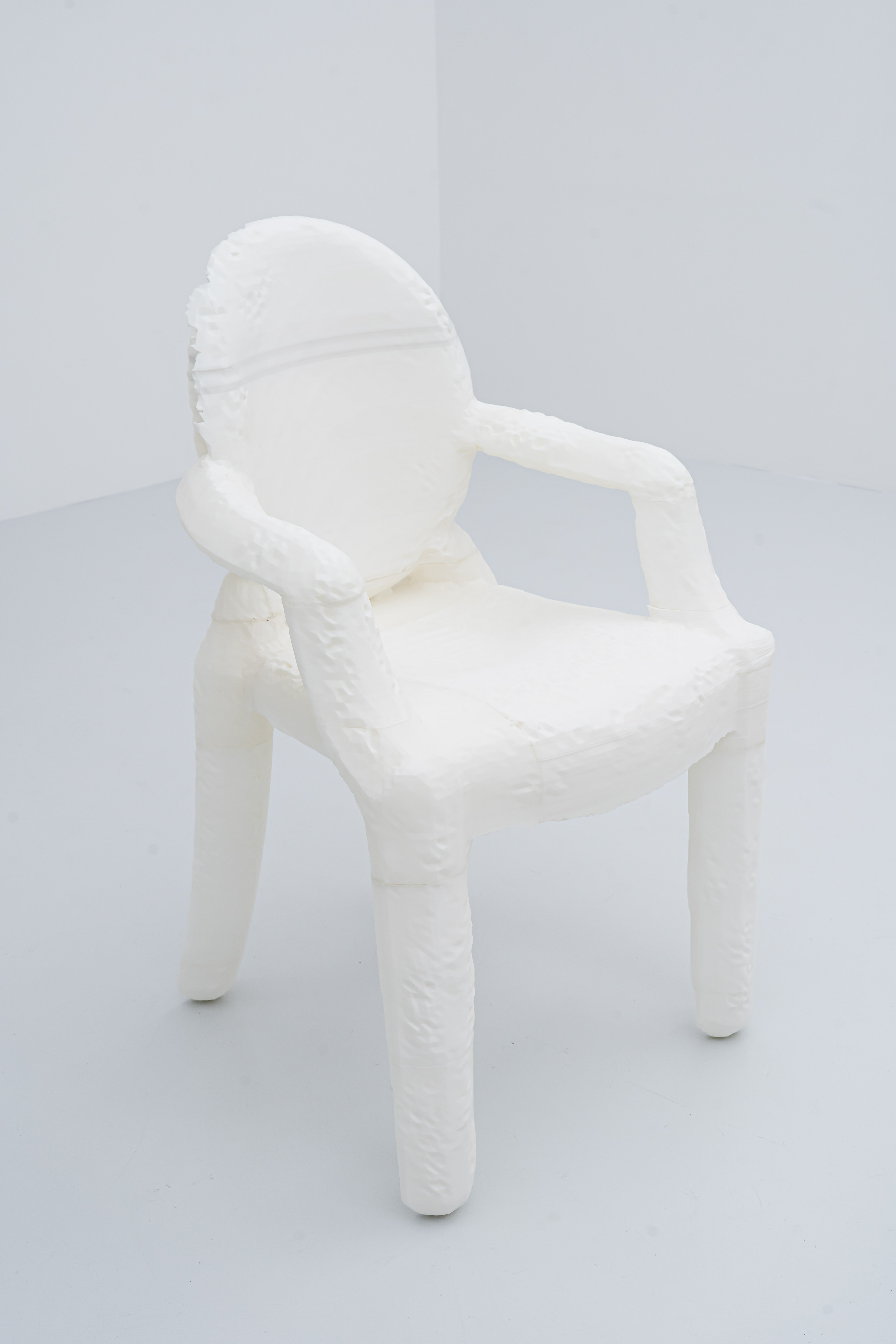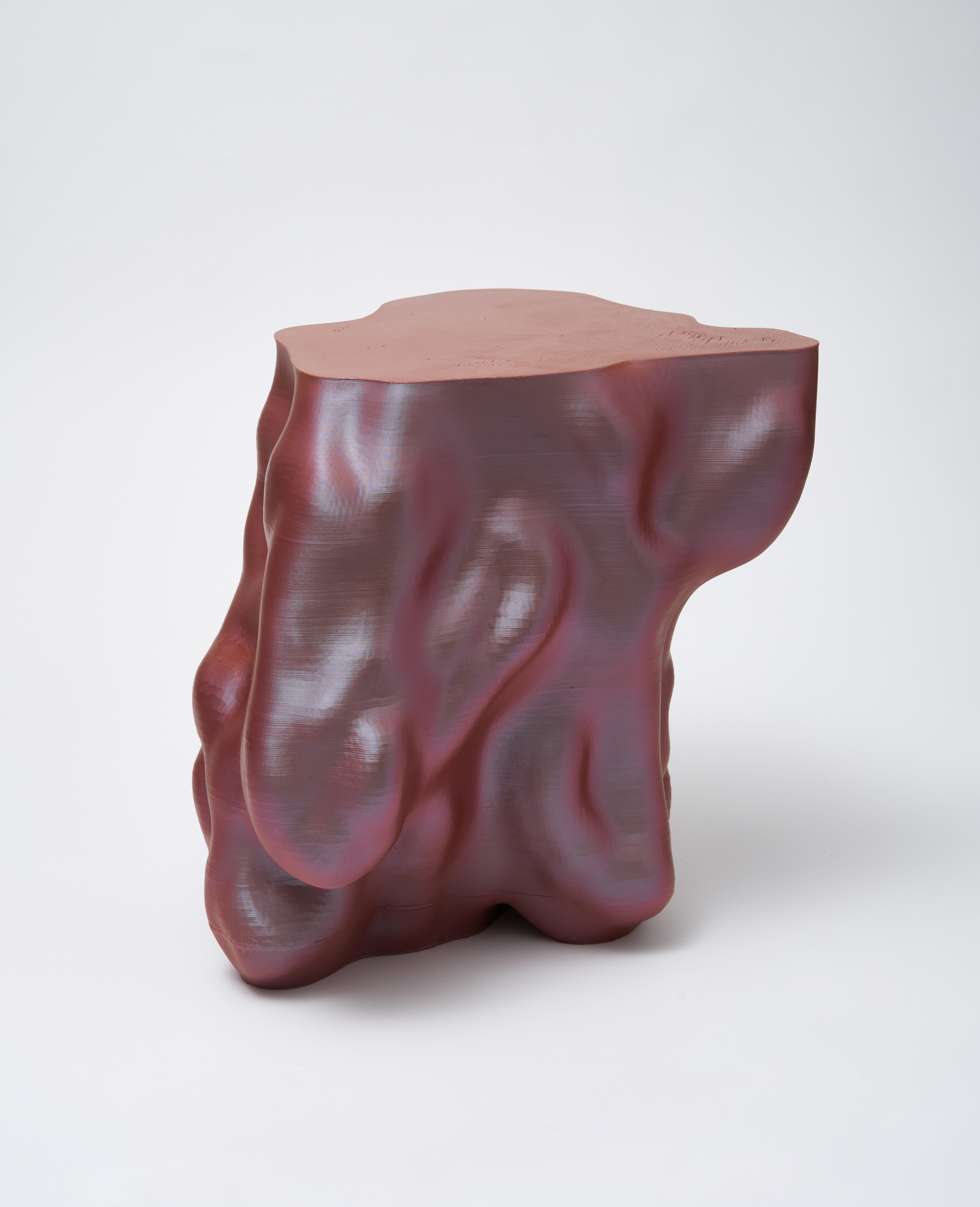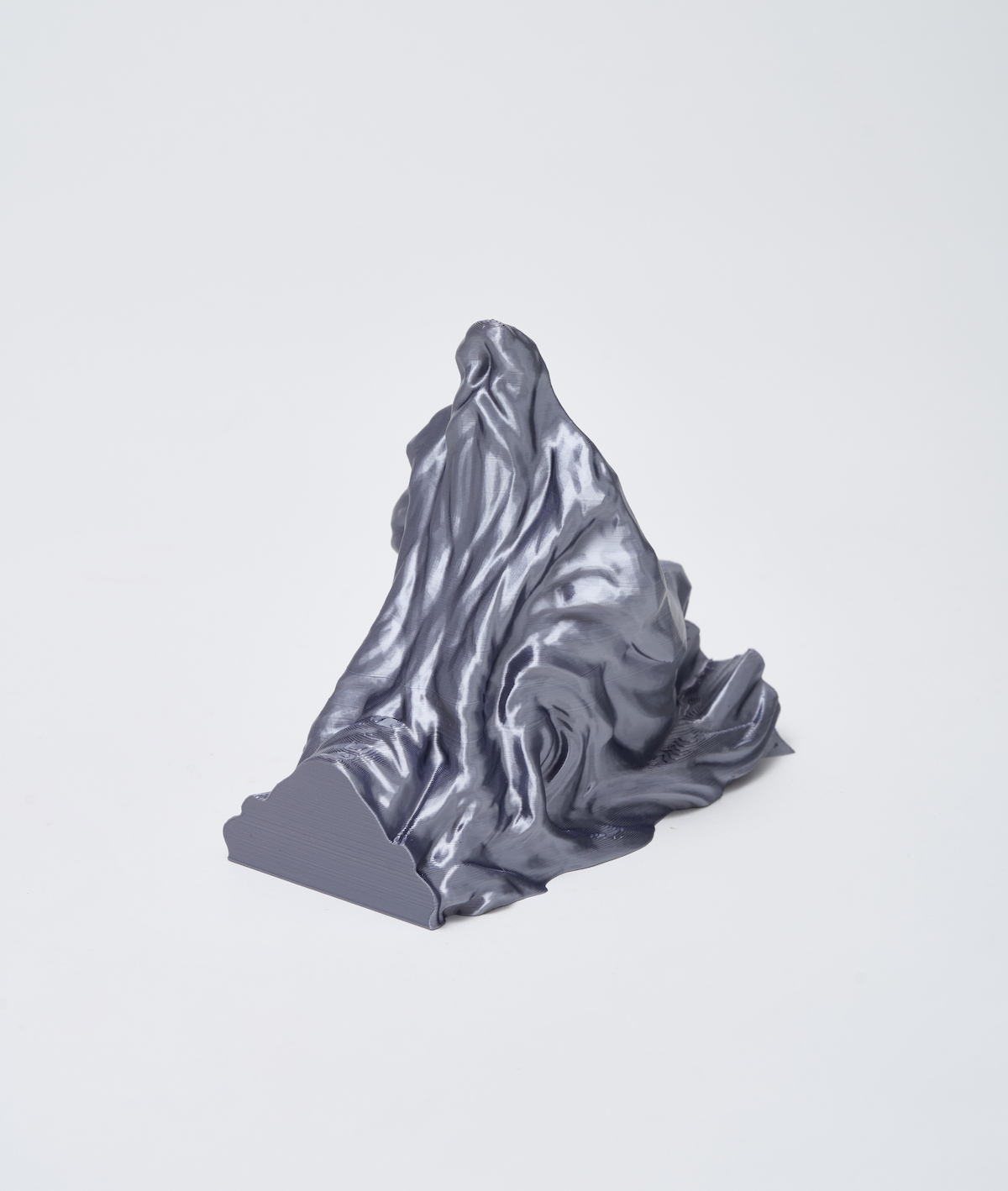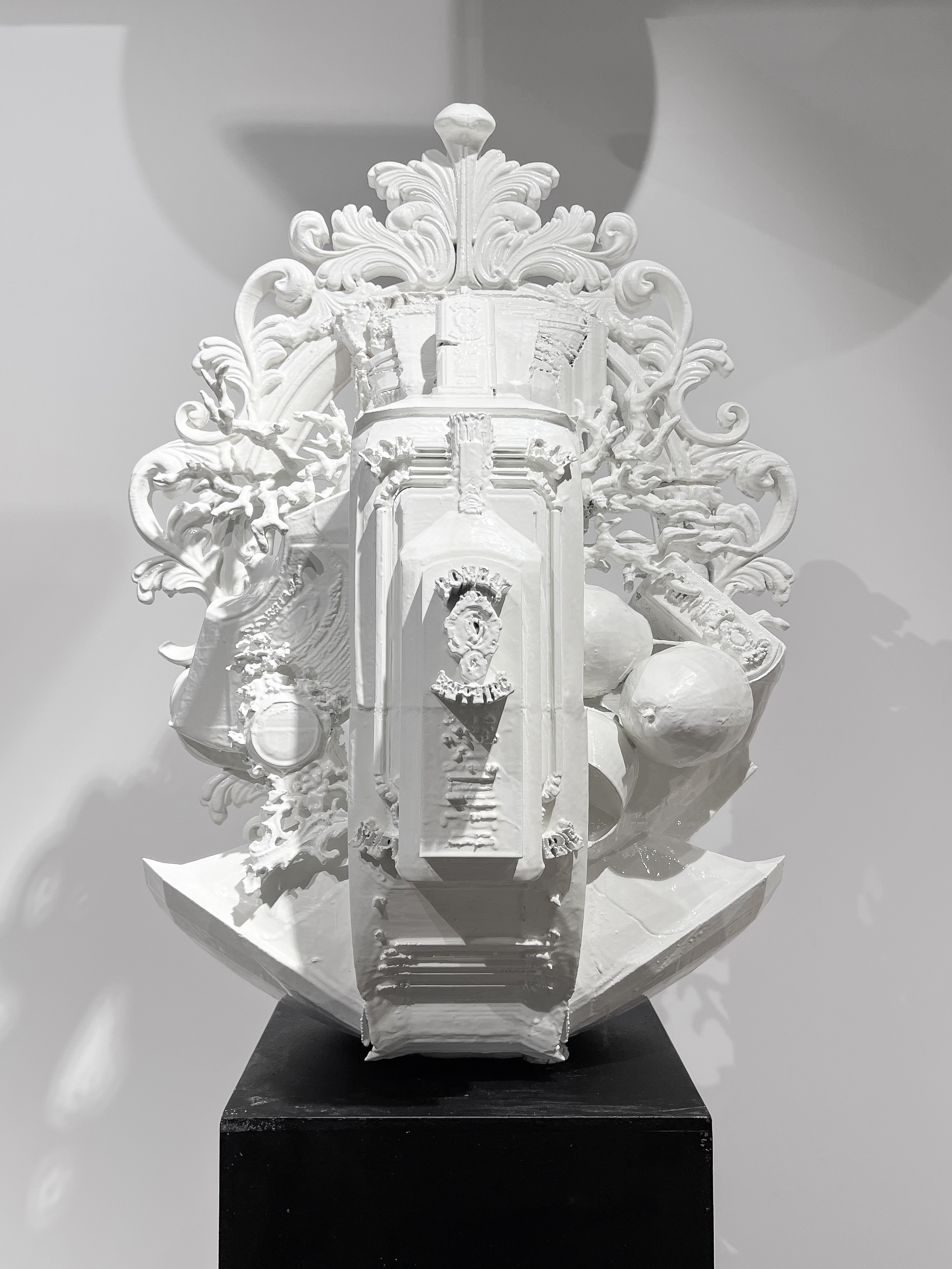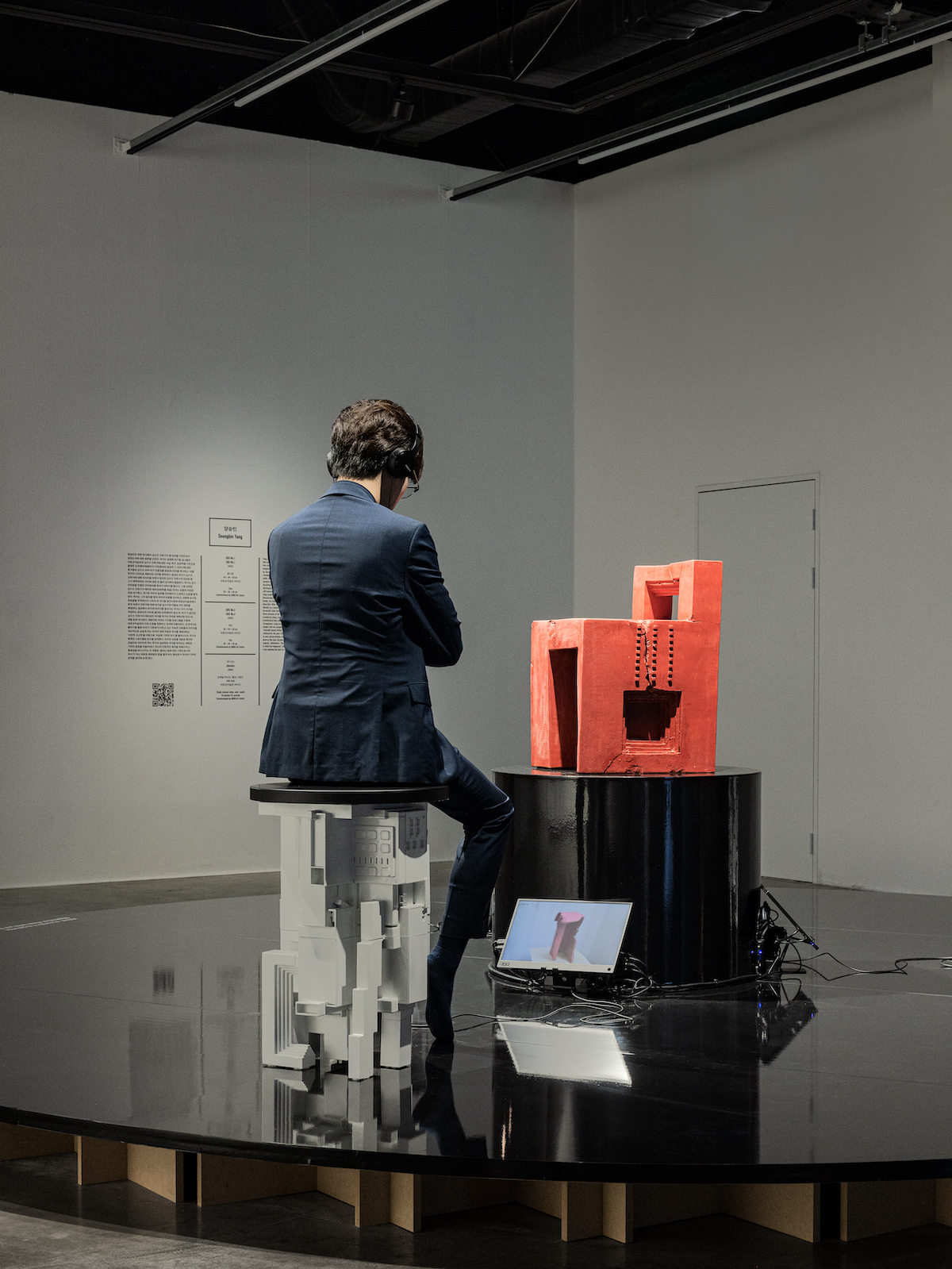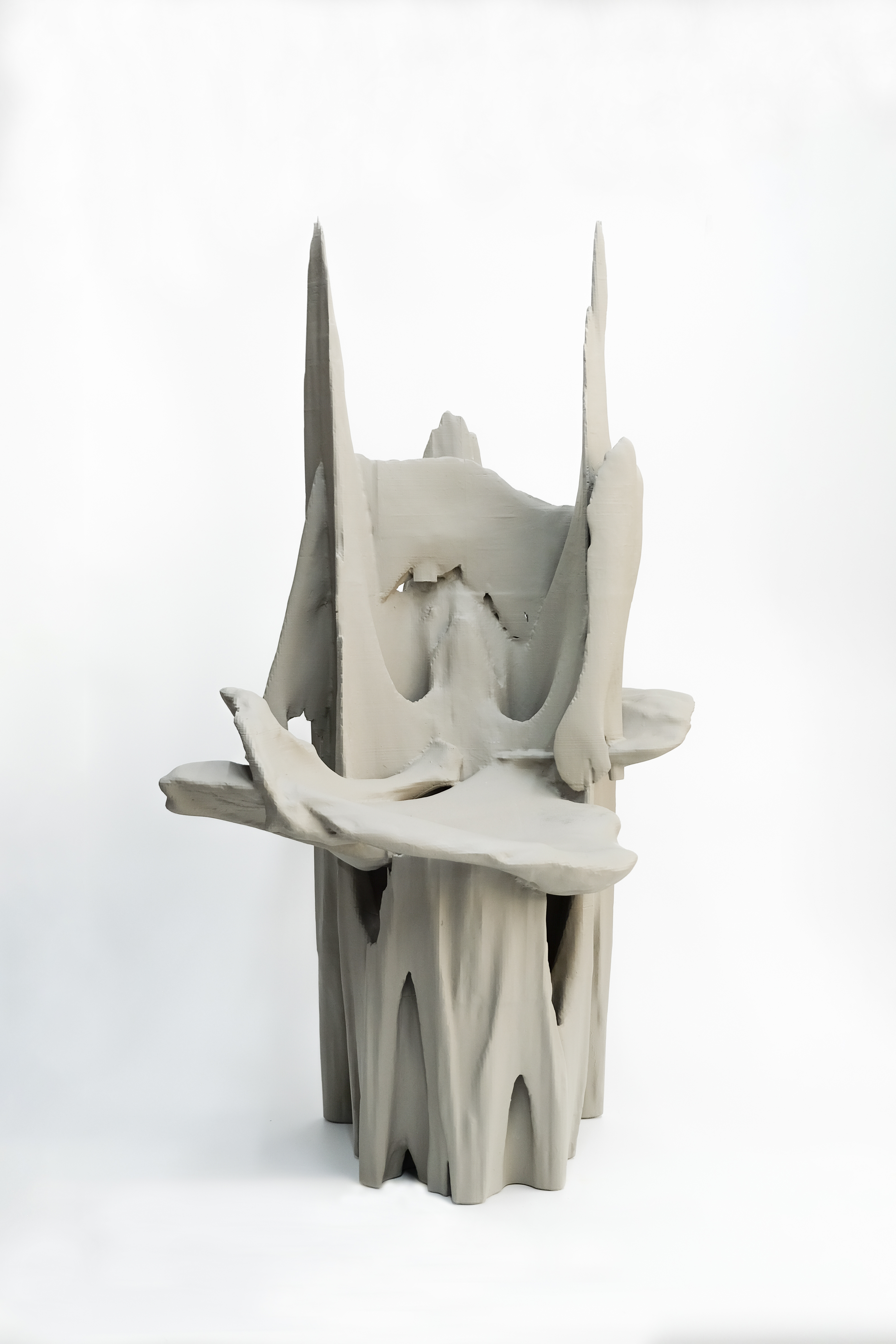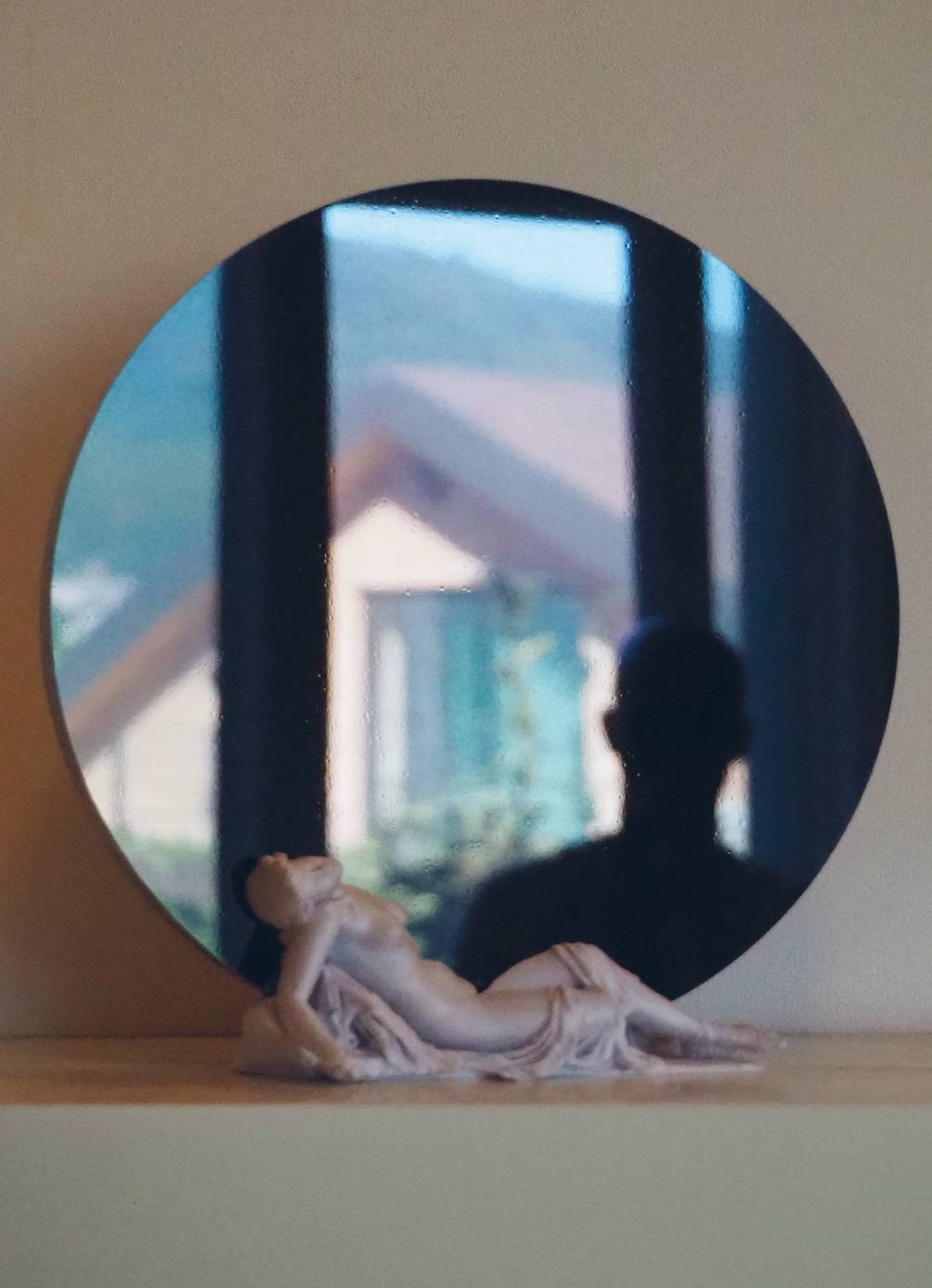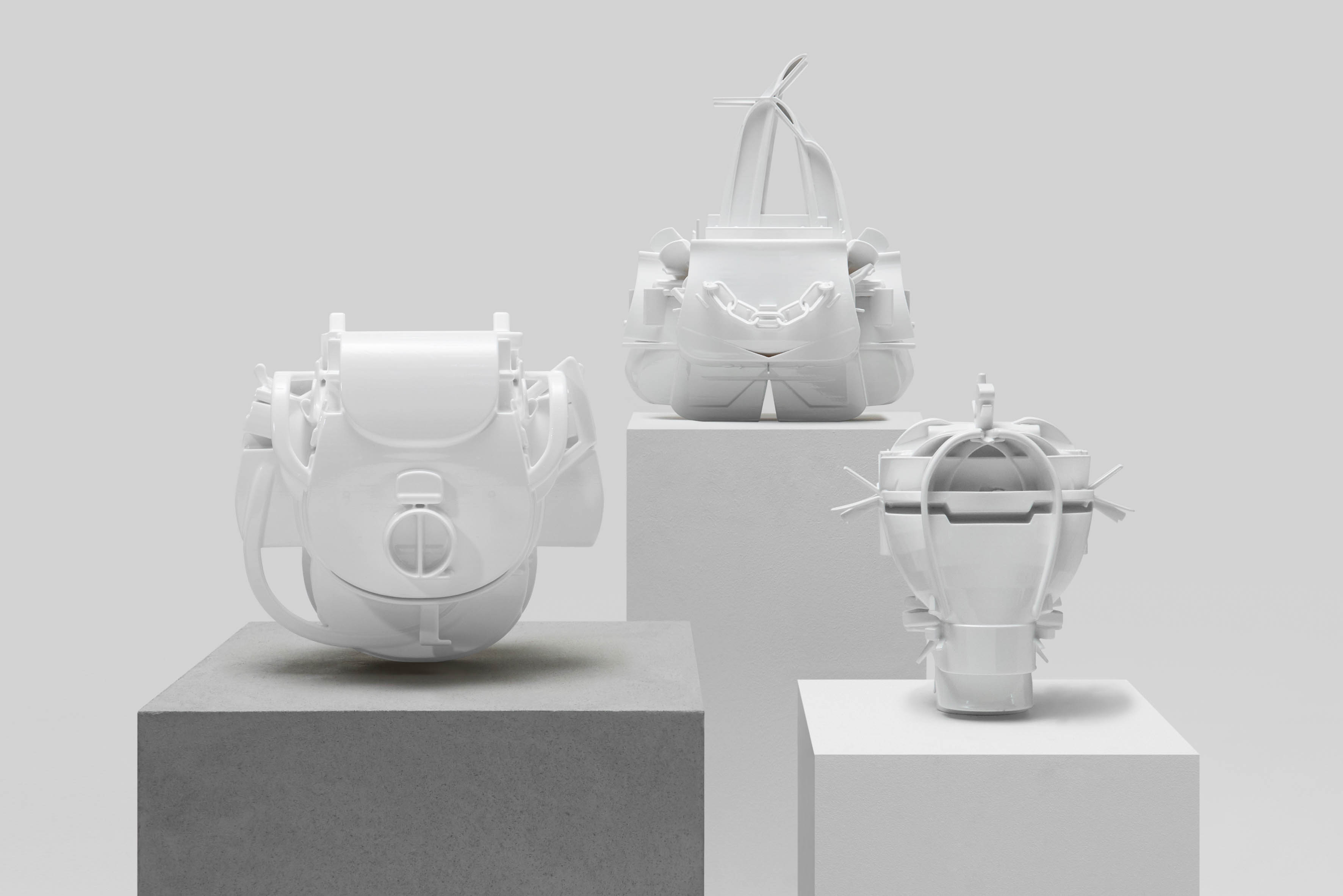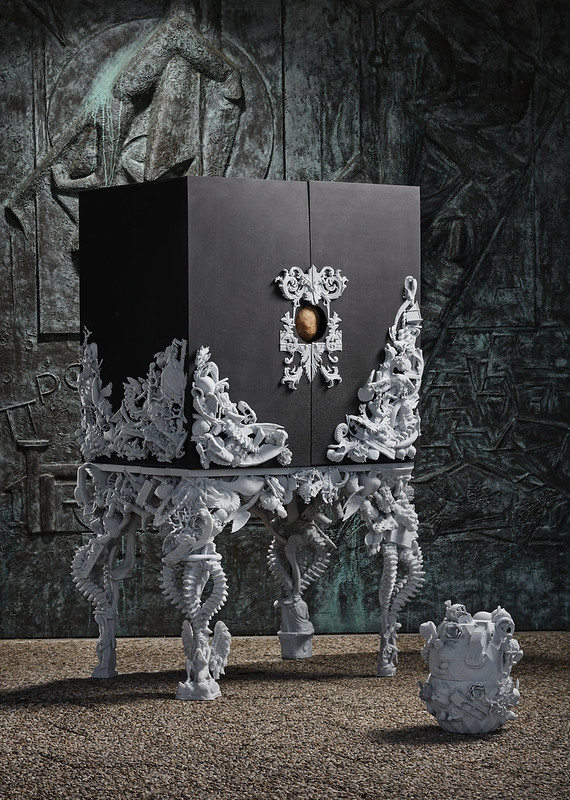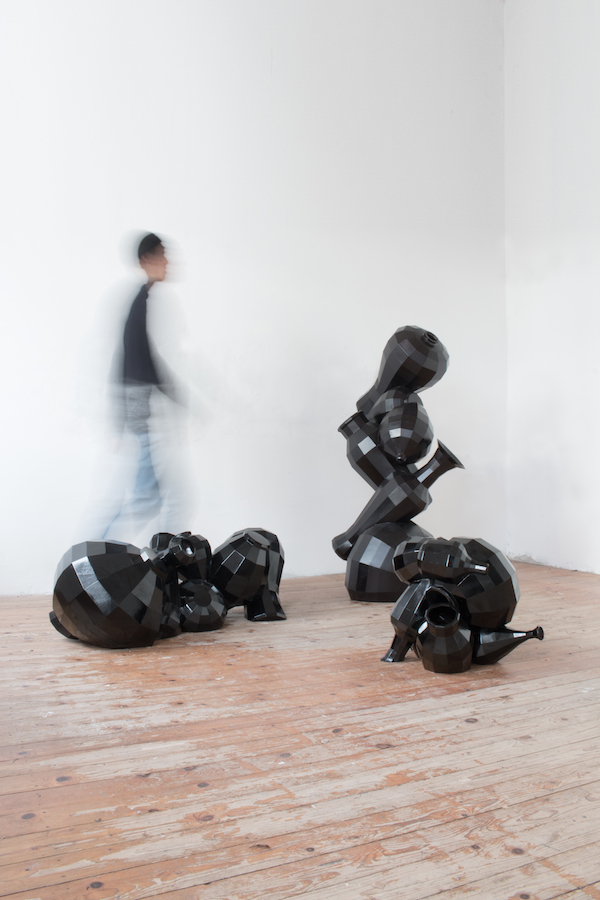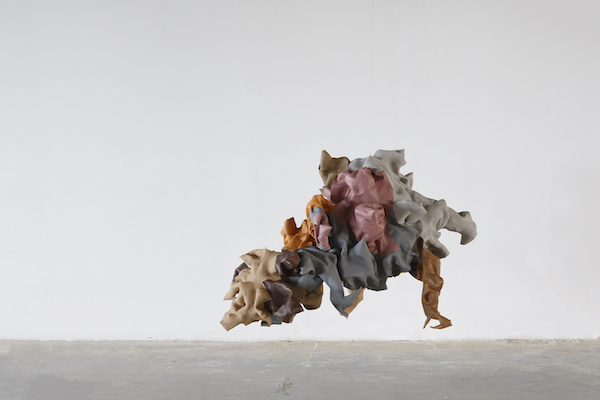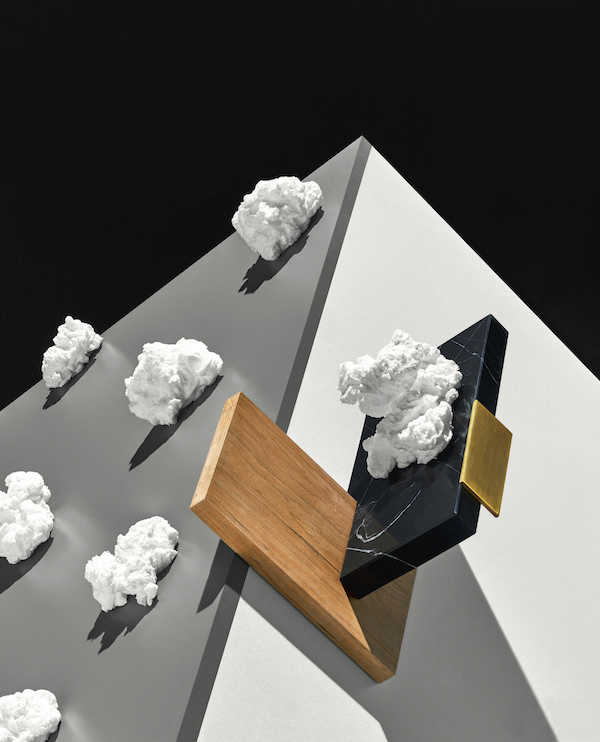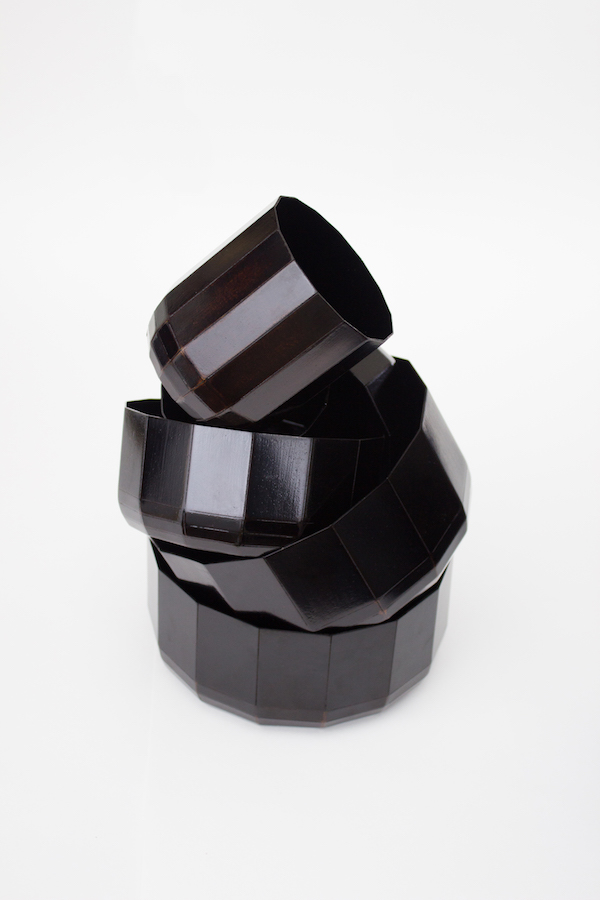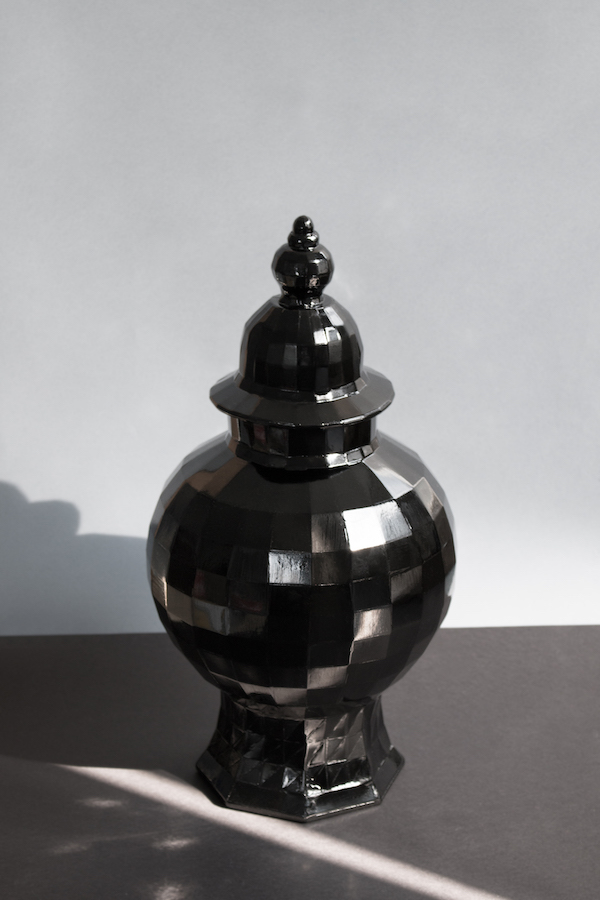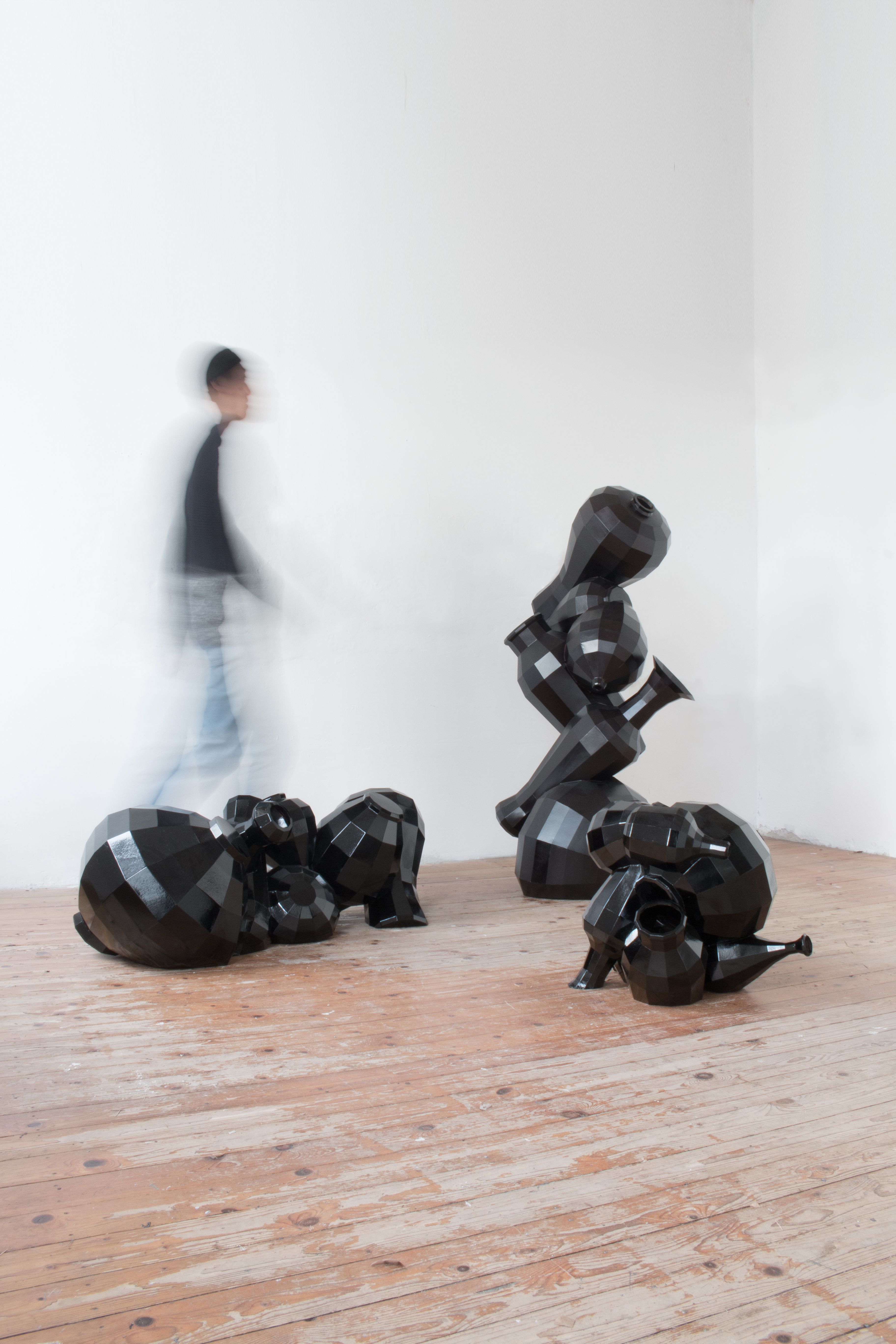
Simulacre (Horizontal, Vertical, Dot)
Urushi (Natural lacquer), Paper
2017
Various Size
After the 21g project, I presented a new series entitled “Simulacre,” developed on the basis of the same methodology. In my previous work, I employed refined lacquer techniques and structural fabrication skills to create not only functional or decorative objects, but furniture and design pieces that embody both aesthetic beauty and conceptual depth. My attention to paper as a material came from its unique properties. Paper is originally light, fragile, and ordinary. Yet when coated with lacquer, it acquires entirely new qualities. Lacquered paper gains waterproofing, durability, and antibacterial effects, while presenting a deep and elegant sheen. It becomes light yet structurally resilient. Through this transformation, I sought to expand the power of traditional craft into the context of contemporary design.
In the 21g series, I studied tableware and ceramic forms from diverse cultures around the world and distilled them into a universal design language. Emphasizing geometric simplicity and minimalist aesthetics, the work was grounded in the modernist principle of “form follows function,” creating outcomes that balanced utility and beauty. In other words, 21g was an exploration of archetypal forms reduced to purified universality. Yet I also sensed that such exploration risked remaining confined within a too-regulated and complete aesthetic. I wished instead to demonstrate that meaning can arise from imperfection and transformation, not only from the archetypal or the canonical.
This critical shift gave rise to the “Simulacre” series. The title borrows from Jean Baudrillard’s concept, referring to a state in which the boundary between original and copy collapses, and where replicated images or objects possess value in themselves. I researched ceramic forms from different cultural traditions, then reconfigured them in deliberately incomplete ways—through partial combinations and distortions. Instead of faithfully reproducing the original, I disrupted cultural symbols and functional meanings by making them misalign. In doing so, I exposed the gap between the value of the original and that of the re-created object, while exploring the new aesthetic possibilities that arise in between.
The Simulacre series is therefore not a mere imitation of ceramics. It is at once an homage and a challenge to the original, an attempt to generate a new kind of originality through replication. Traditional ceramic forms embody layers of history, culture, function, and aesthetics. But when re-presented in an incomplete manner, they can no longer be interpreted through reliance on the original alone. Instead, the re-created object emerges as an independent entity, meaningful within its own context. It is precisely at this juncture that I experimented with how art and design might engage with the tensions between original and copy, reality and representation.
The series also demonstrates the structural potential of lacquered paper in the making of large-scale objects. Paper, ordinarily unsuitable for furniture or architectural structures, gains firmness and stability through the lacquer process. With this, I was able to create objects that embody both heaviness and lightness, fragility and strength. The three art-furniture pieces in the Simulacre series—focused on the fundamental elements of point, line, and plane—are the results of this material experiment. They function simultaneously as practical furniture and as aesthetic sculptures, occupying a hybrid identity that resists reduction to one category.
Ultimately, Simulacre operates on two levels. First, it is a material experiment combining tradition and modernity: rooted in a Korean craft technique, yet expanding into the realm of contemporary design objects. Second, it is a conceptual inquiry into the philosophical problem of originals and copies. Imperfect replication paradoxically acquires a new originality, transforming the object into a device that poses cultural and philosophical questions rather than remaining a purely functional thing.
Whereas 21g presented balance and refinement through universalized forms, Simulacre articulates new tensions and values through imperfection and transformation. The two works pursue different directions, yet share a common ground in their exploration of the boundaries between tradition and modernity, original and copy, function and aesthetics. With this series, I wish to ask viewers: Where does the value of an object lie? Is it valuable because it is original, or does value emerge anew through replication and re-contextualization?
The Simulacre series embraces these questions while positioning itself as an experimental crossing of function and form, tradition and contemporaneity. More than furniture or object, it acts as a catalyst that compels us to reconsider originals and copies, reality and image, tradition and the present.
-
‘21g’ 프로젝트 이후, 나는 동일한 방법론을 바탕으로 새로운 작업 시리즈인 ‘Simulacre’를 선보였다. 전작에서 나는 숙련된 옻칠 기법과 구조 제작 기술을 활용하여 단순히 기능적이거나 장식적인 물건을 만드는 것을 넘어, 미적 아름다움과 개념적 깊이를 동시에 지닌 가구와 디자인 오브제를 제작하였다. 특히 종이라는 재료에 주목한 이유는 그것이 지닌 물성의 독특함 때문이다. 종이는 본래 가볍고 약하며, 일상적이고 흔한 재료다. 그러나 종이에 옻칠을 입히는 순간, 그것은 전혀 다른 성질을 획득한다. 옻칠 종이는 방수성과 내구성, 항균 효과를 지니는 동시에 표면에 깊고 고급스러운 광택을 띠게 되며, 가볍지만 단단한 구조적 가능성을 보여준다. 나는 이러한 재료적 전환의 힘을 통해, 전통 기법을 현대 디자인의 맥락 속으로 확장하는 시도를 하고자 했다.
‘21g’ 시리즈에서는 세계 각국의 다양한 문화권에서 발견되는 테이블웨어와 도자기 형태를 연구하고, 이를 보편적 디자인 언어로 정제하였다. 기하학적 단순성과 미니멀리즘적 미학을 강조하며, “형태는 기능을 따른다(Form follows function)”라는 근대 디자인의 근본 원칙을 바탕으로, 실용성과 심미성이 결합된 결과물을 제작했다. 다시 말해, ‘21g’은 원형적 형태를 탐구하며 그것을 정제된 보편적 언어로 환원하는 작업이었다. 그러나 나는 이러한 탐구가 한편으로는 지나치게 규범적이고 완결된 미학에 머무를 위험이 있다고 느꼈다. 원형과 규범이 아닌, 불완전성과 변형 속에서 새로운 의미가 발생할 수 있음을 보여주고자 한 것이다.
바로 이러한 문제의식을 확장한 것이 ‘Simulacre’ 시리즈다. ‘Simulacre’라는 제목은 장 보드리야르(Jean Baudrillard)의 개념을 차용한 것으로, 원본과 복제의 경계가 무너지고 복제된 이미지나 사물이 스스로의 가치를 갖게 되는 현상을 가리킨다. 나는 여러 문화권에서 상징적 가치를 지닌 도자기 형태들을 연구한 뒤, 그것들을 완전하지 않은 방식으로 조합하거나 변형하였다. 즉, 원본의 형태를 그대로 복제하는 대신, 의도적으로 불완전하게 조합함으로써 그것이 가진 문화적 기호와 기능적 의미가 어긋나도록 했다. 이 과정에서 원본의 가치와 복제된 오브제가 가지는 가치 사이의 간극을 드러내고, 동시에 그 사이에서 발생하는 새로운 미학적 가능성을 탐구하고자 했다.
‘Simulacre’ 시리즈는 따라서 단순히 도자기의 형태를 모방한 작업이 아니다. 그것은 원본에 대한 존중과 동시에 도전이며, 복제를 통해 새로운 원본성을 만들어내는 시도다. 전통적인 도자기의 형태는 역사와 문화, 기능과 미학이 중첩된 상징적 오브제다. 그러나 그것을 불완전하게 재현했을 때, 우리는 더 이상 원본에 기대어 그것을 해석할 수 없게 된다. 오히려 복제된 오브제는 독립적인 존재로서, 새로운 맥락 속에서 다시금 의미를 갖게 된다. 나는 바로 이 지점에서 예술과 디자인이 원본/복제, 실재/재현의 문제를 어떻게 다룰 수 있는지를 실험했다.
특히 이 시리즈는 옻칠 종이라는 재료가 대형 오브제 제작에서도 구조적 가능성을 지닌다는 점을 보여준다. 종이는 본래 가구나 대형 구조물을 지탱하기에는 부족한 재료로 여겨지지만, 옻칠을 입히는 과정을 통해 단단한 구조적 안정성을 확보할 수 있다. 이를 통해 나는 가벼움과 무거움, 약함과 강함이라는 상반된 특성을 동시에 담아내는 새로운 오브제를 만들고자 했다. ‘Simulacre’ 시리즈에서 제작된 점, 선, 면을 주제로 한 세 가지 아트 퍼니처는 이러한 재료적 실험의 결과물이다. 이들은 단순히 예술적 조형물로 존재하는 것이 아니라, 실질적으로 사용할 수 있는 가구로서의 기능을 지니며, 동시에 미적 요소를 전면에 드러내는 혼종적 오브제가 된다.
결국 ‘Simulacre’는 두 가지 층위에서 의미를 갖는다. 하나는 옻칠 종이라는 전통과 현대가 결합된 재료 실험의 차원이다. 그것은 한국 전통 기법을 기반으로 하면서도 현대 디자인 오브제로 확장될 수 있는 새로운 가능성을 보여준다. 다른 하나는 원본과 복제의 철학적 문제를 다루는 개념적 차원이다. 불완전한 복제는 오히려 새로운 원본성을 획득하며, 이 과정에서 오브제는 단순한 기능적 물건이 아니라 문화적, 철학적 질문을 던지는 장치가 된다.
‘21g’가 보편적이고 정제된 형태를 통해 기능과 미학의 균형을 보여주었다면, ‘Simulacre’는 불완전성과 변형 속에서 새로운 긴장과 미학적 가치를 제시한다. 두 작업은 서로 다른 방향성을 지니면서도, 모두 전통과 현대, 원본과 복제, 기능과 미학의 경계에서 새로운 가능성을 탐구한다는 점에서 하나의 맥락 위에 있다. 나는 이 시리즈를 통해 관람자들에게 질문을 던지고 싶다. 우리가 바라보는 오브제의 가치는 어디에서 오는가? 원본이기에 가치 있는 것인가, 아니면 복제되며 새롭게 창출된 맥락 속에서 가치가 발생하는 것인가?
‘Simulacre’ 시리즈는 이러한 질문을 품은 채, 기능과 조형, 전통과 현대를 넘나드는 조형 실험으로 자리 잡는다. 그것은 단순히 가구나 오브제가 아니라, 우리에게 원본과 복제, 실재와 이미지, 전통과 현대를 다시금 사유하게 하는 촉매제다.
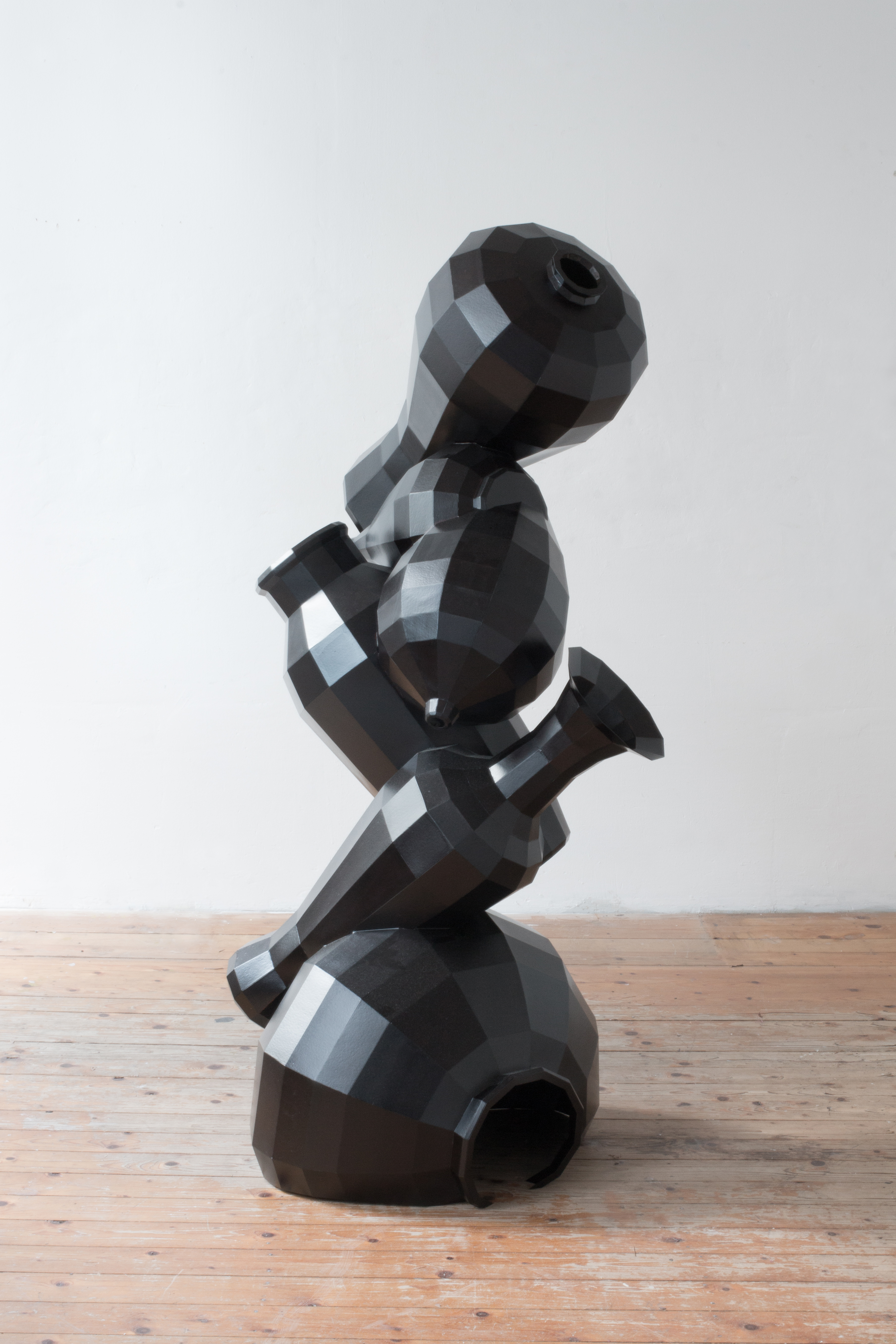
Simulacre (Vertical)
Urushi (Natural lacquer), Paper
2017
850 (W) X 900 (L) X 1600 (H)
Limited Edition of 4 + 1 AP
Urushi (Natural lacquer), Paper
2017
850 (W) X 900 (L) X 1600 (H)
Limited Edition of 4 + 1 AP
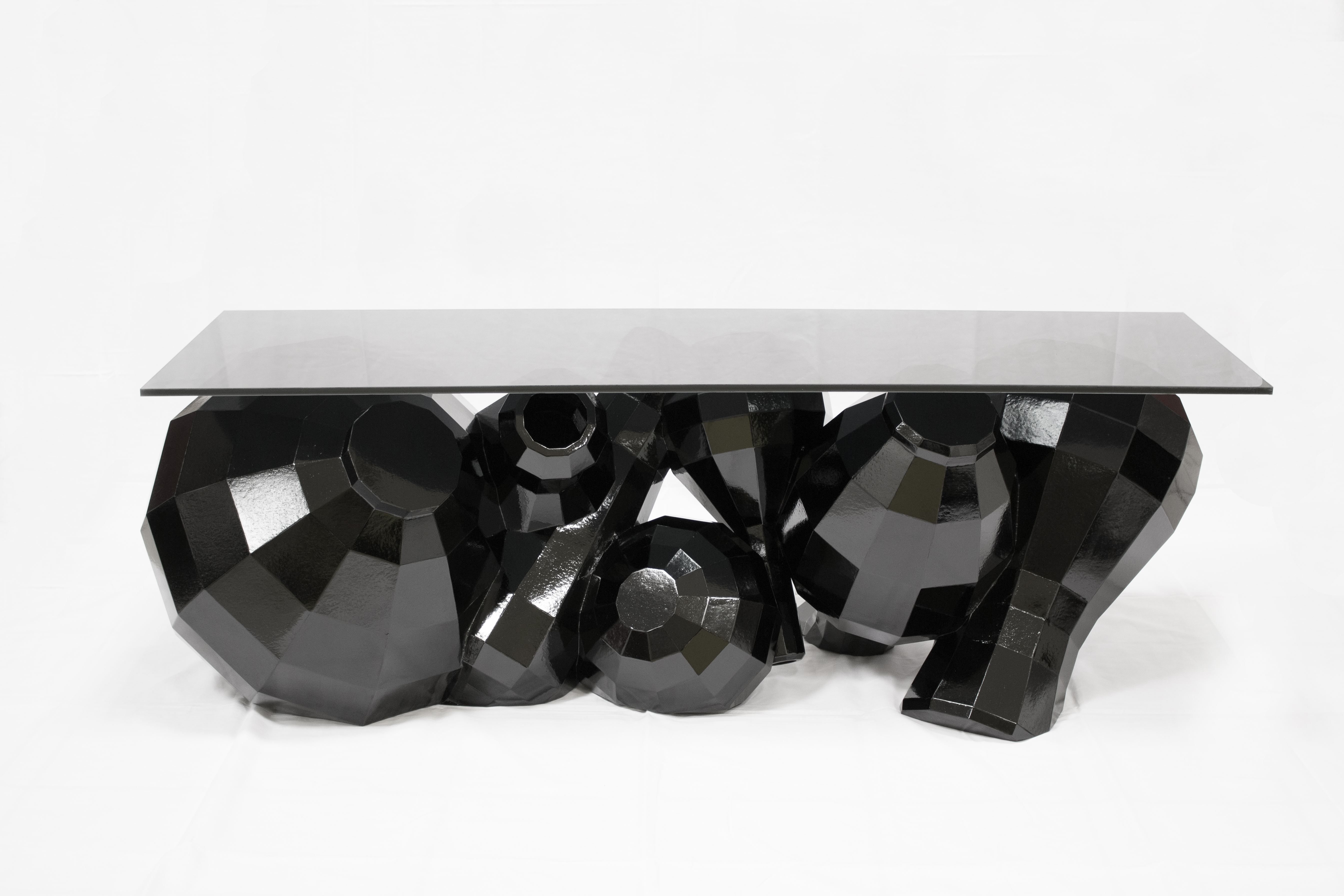
Simulacre_Horizontal
Urushi (Natural lacquer), Paper, Plexigalss
2017
1200 (W) X 450 (L) X 400 (H)
Limited Edition of 6 + 2 AP
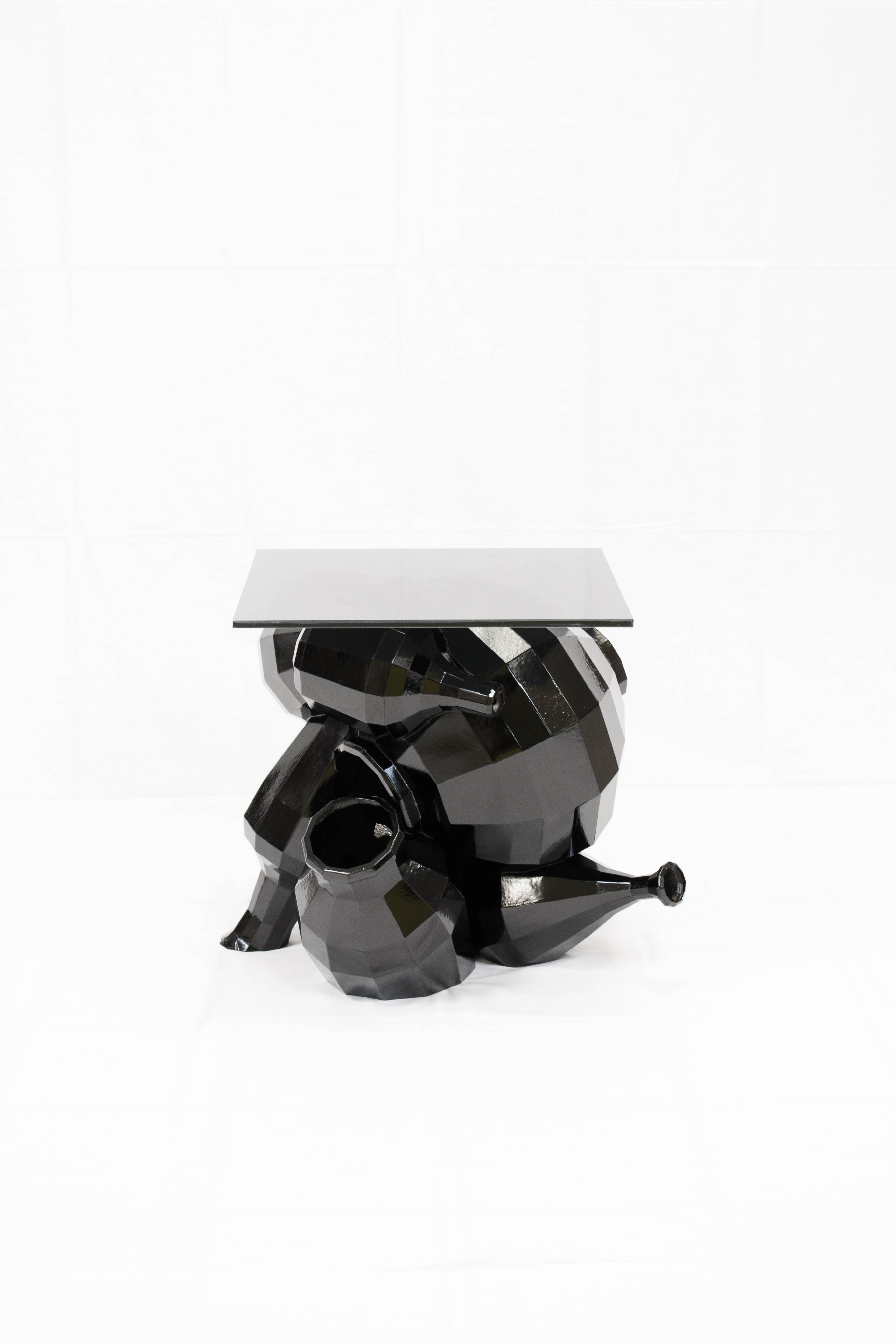
Simulacre_Dot
Urushi (Natural lacquer), Paper, Plexigalss
2017
450 (W) X 450 (L) X 400 (H)
Limited Edition of 6 + 2 AP

Simulacre_Dot(RED)
Urushi (Natural lacquer), Paper, Plexigalss
2017
450 (W) X 450 (L) X 400 (H)
Limited Edition of 3 + 1 AP
